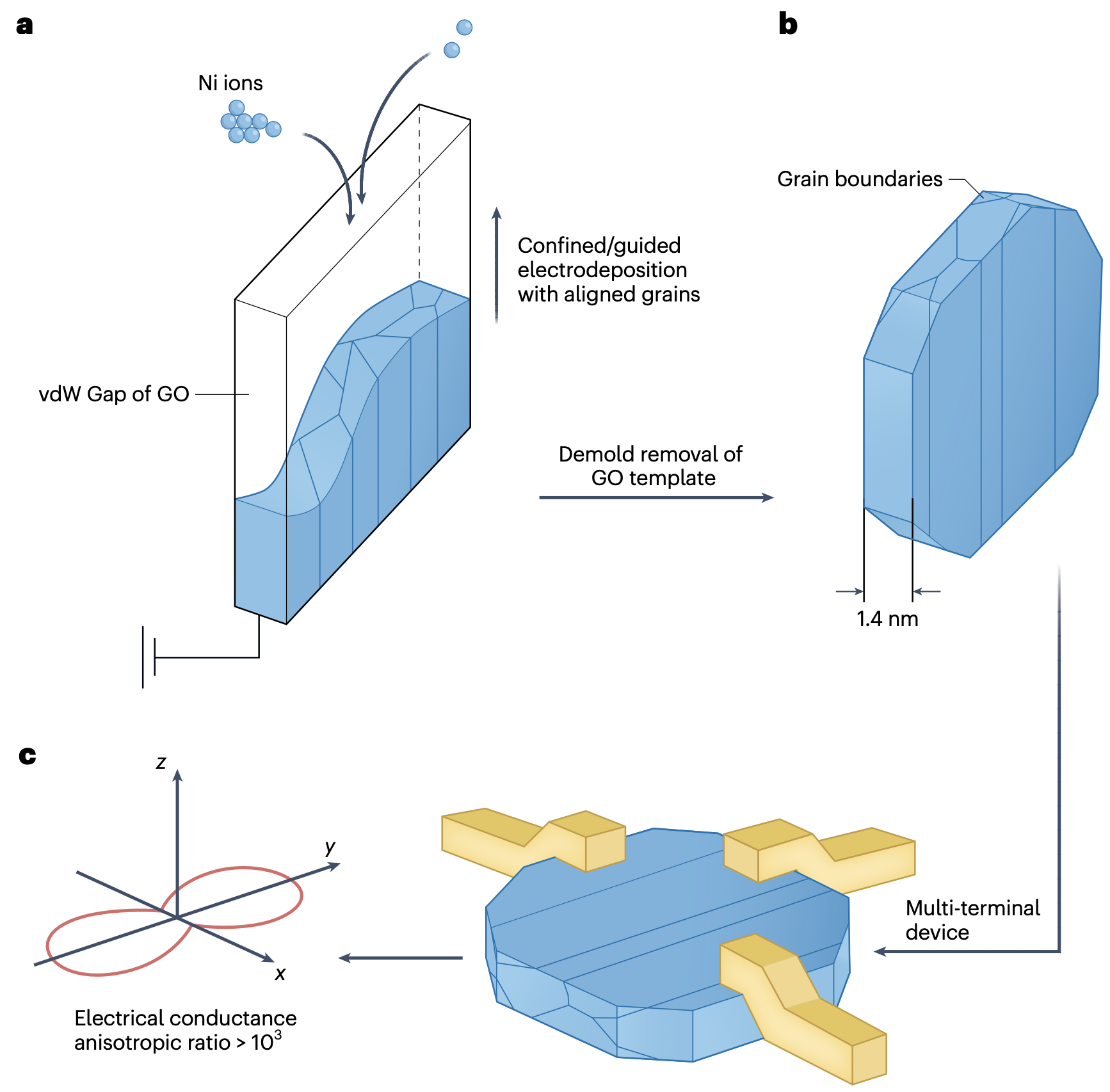
Researchers at IQMD wrote News&Views in Nature Synthesis
source:admin update time:2024-10-15 15:38:00
Dimensional effects serve as a crucial parameter for tuning the physical properties of materials.
In recent years, confined growth techniques for synthesizing low-dimensional materials with unique properties have attracted significant attention. In particular, the sub-nanometer-scale interlayer interfaces in two-dimensional (2D) van der Waals (vdW) materials provide an ideal confined environment, enabling breakthroughs in areas such as ultra-high-quality carbon nanoribbons and elemental 2D semiconductor nanosheets. These advances offer a critical material foundation for novel mesoscopic quantum electronic devices.
In response to a recent experimental study on the electrochemical deposition of elemental nickel (Ni) nanosheets under 2D confinement, Xiaoxi Li and colleagues authored a News & Views article (Figure 1) discussing the implications of this work. The confined sub-nanometer interlayer spacing, which is smaller than the critical nucleation size of metallic nickel, drives the formation of highly oriented grain boundaries within the in-plane 2D nickel nanosheets. Furthermore, after template removal, these metallic nanosheets exhibit in-plane electrical conductivity anisotropy spanning three orders of magnitude, demonstrating their potential for anisotropic logic device prototypes.
Overall, nano confinement-based synthesis of low-dimensional nanomaterials holds tremendous potential for controlling material microstructures, and its emergent physical properties are highly promising for future applications.

Fig. 1. Schematic picture of moulded method for synthesizing metallic nanosheets with engineered anisotropic grain boundaries between van der Waals gaps.
(Image From:Nature Synthesis)。
Original Article:
https://www.nature.com/articles/s44160-024-00686-3
- Research Highlights



